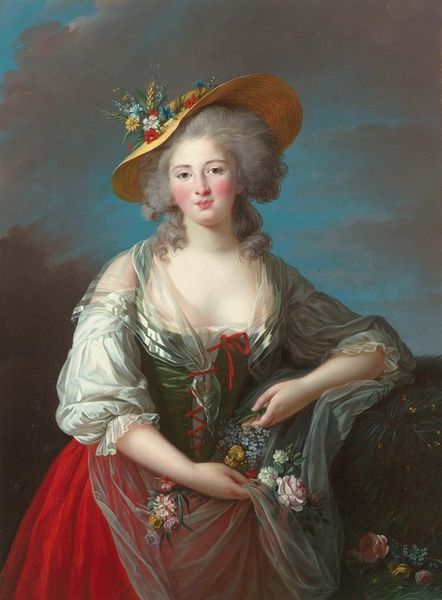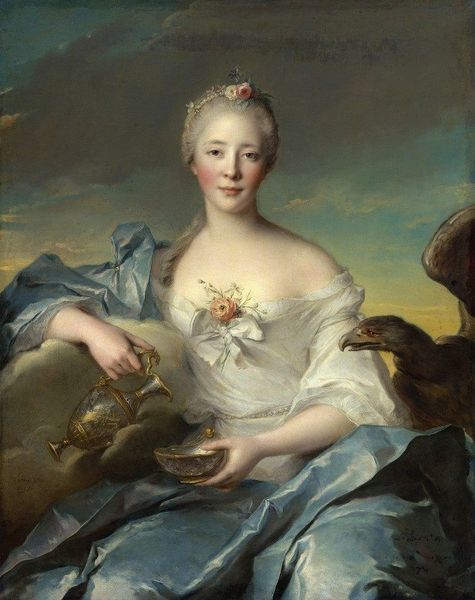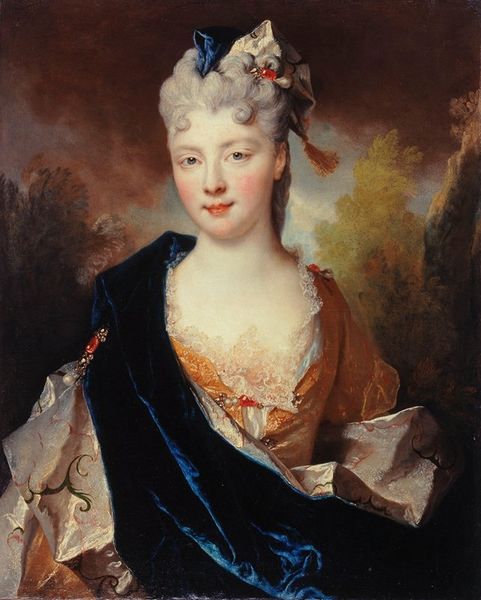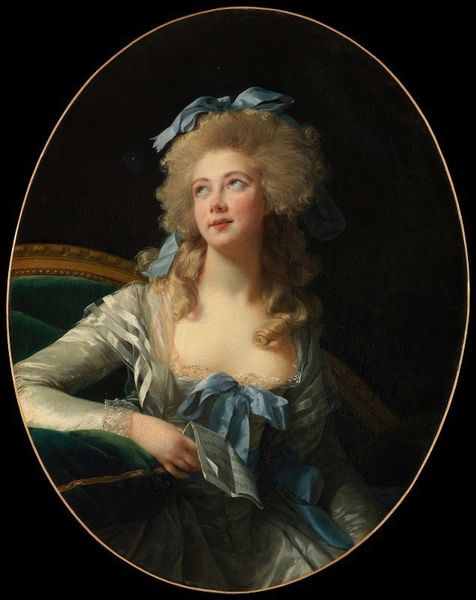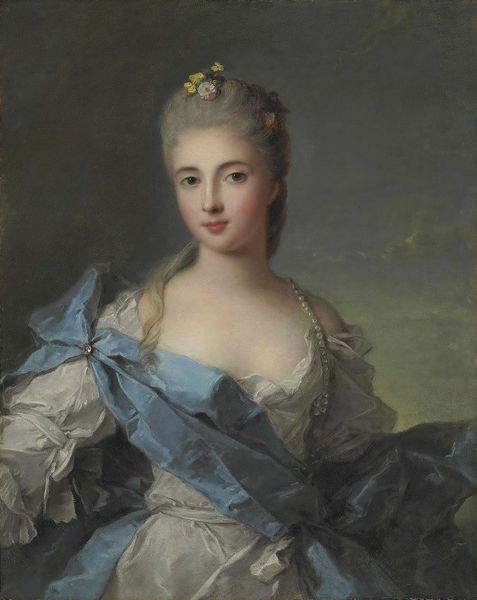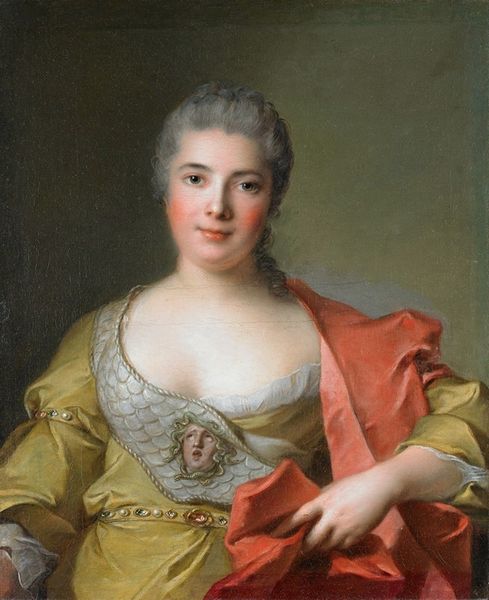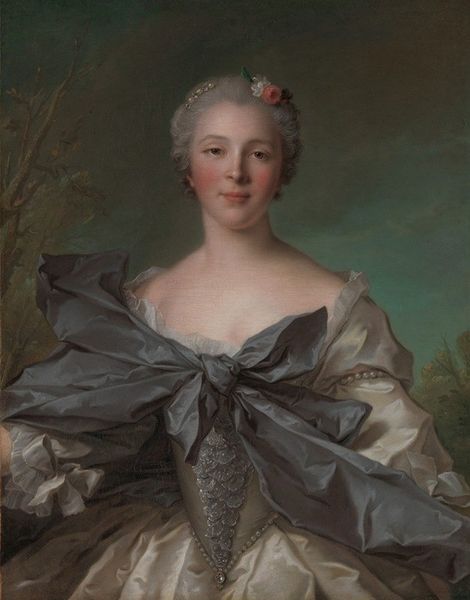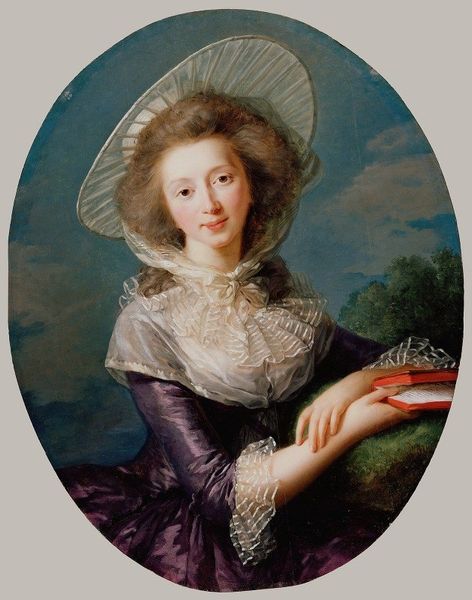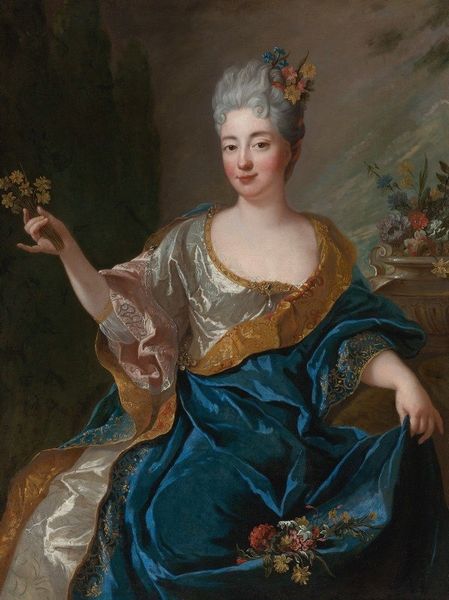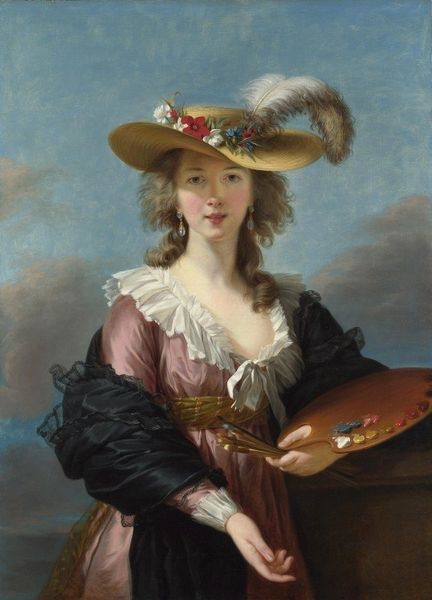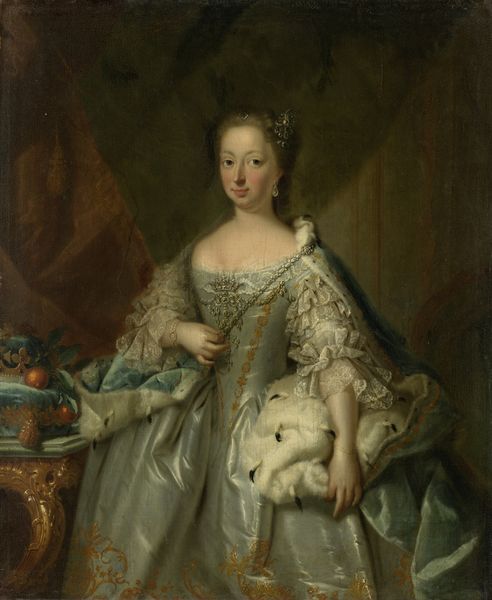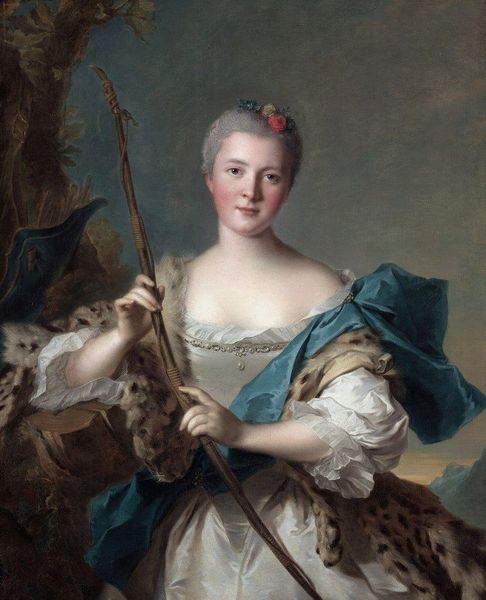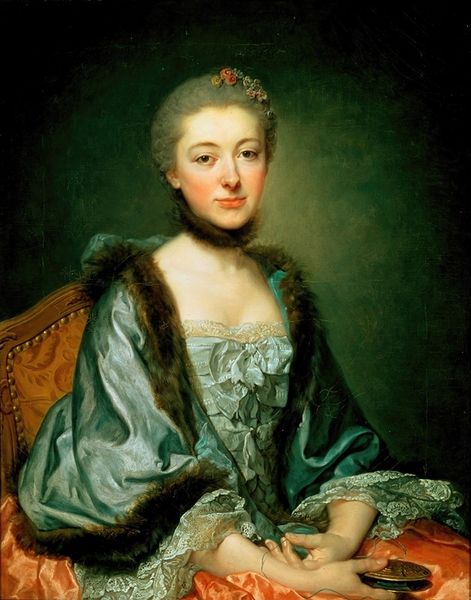
Copyright: Public Domain: Artvee
Elisabeth Louise Vigée Le Brun painted Madame du Barry, a vision of French aristocracy, with oils on canvas. The wreath of flowers upon Madame du Barry's head is no mere decoration. Since antiquity, flowers have symbolized fleeting beauty, a reminder of mortality woven into life's tapestry. The Ancient Greeks crowned victors and deities with wreaths, infusing the wearer with divine favor and victory. Observe how this motif resurfaces in Botticelli's "Primavera," where Flora, the goddess of spring, scatters blossoms, embodying rebirth and renewal. Over time, the flower wreath has evolved to signify love, celebration, and remembrance, adorning brides and graves alike. Psychologically, flowers evoke primal responses tied to fertility and the cycle of life. Here, the wreath on Madame du Barry's head carries an emotional weight, a bittersweet recognition of beauty's transience amid the opulence of her era. The symbol reveals a powerful force, engaging viewers on a deep, subconscious level. Thus, the motif echoes through history, a testament to its enduring power, reborn in each new context.
Comments
No comments
Be the first to comment and join the conversation on the ultimate creative platform.
